Introduction
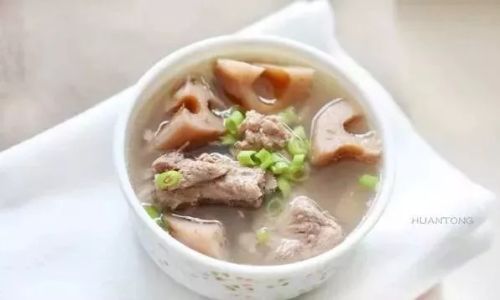
Soup, a cornerstone of culinary art across various cultures, holds a special place in the hearts and stomachs of many. It is not just a meal but an experience—a warm embrace that soothes the soul and nourishes the body. Among the myriad of soup recipes, Lotus Root and Pork Rib Soup stands out for its unique blend of flavors and nutritional benefits. This dish, often found in East Asian cuisines, particularly in China, combines the earthy sweetness of lotus root with the rich, savory taste of pork ribs, creating a harmonious and comforting broth.
In this article, we will delve into the art of making Lotus Root and Pork Rib Soup, from selecting the freshest ingredients to perfecting the cooking process. By the end, you will have a comprehensive guide to crafting this delightful dish that promises to delight your taste buds and nourish your body.
Ingredients Selection
The key to any successful dish lies in the quality of its ingredients. For Lotus Root and Pork Rib Soup, here’s what you’ll need:
-
Pork Ribs: Choose pork spare ribs or pork short ribs. They offer a balance of meat and bone, which is essential for flavorful broth. Look for ribs that are pinkish-red in color, with a firm texture and minimal fat. Freshness is crucial; avoid ribs that have a grayish hue or an unpleasant odor.
-
Lotus Root: Select lotus roots that are firm and have a smooth, unblemished skin. They should be heavy for their size, indicating freshness and moisture. Avoid roots with cracks, soft spots, or mold.
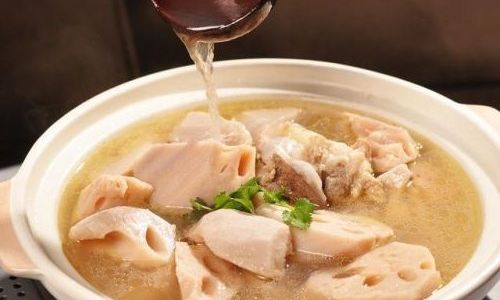
-
Ginger: Fresh ginger adds warmth and depth to the soup. Choose ginger that is firm, smooth, and has a strong aroma. Avoid pieces that are wrinkled or have mold.
-
Green Onions: These are used for garnishing and adding a fresh, mild onion flavor. Look for bunchess with bright green stalks and firm white bulbs.
-
Salt: Use high-quality sea salt or kosher salt for the best flavor.
-
White Pepper: White pepper adds a subtle heat and enhances the overall taste of the soup.
-
Water or Broth: For the base, you can use plain water, chicken broth, or pork broth. Chicken broth adds a layer of complexity, while pork broth complements the pork ribs beautifully.
-
Optional Ingredients: Depending on your preference, you can add other ingredients such as dried mushrooms, red dates, or goji berries for added nutrition and flavor.
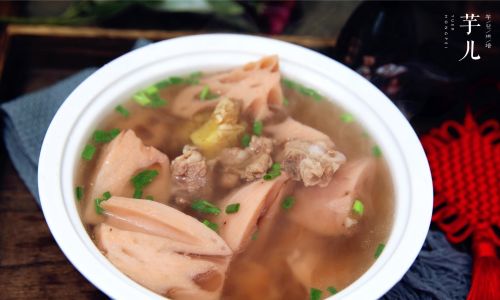
Preparation Steps
-
Cleaning and Preparing the Pork Ribs
- Rinse the pork ribs under cold running water to remove any surface impurities.
- Place the ribs in a large pot and cover them with cold water. Bring to a boil over high heat. This process, known as blanching, helps to remove blood and impurities, resulting in a clearer broth.
- Once the water boils, skim off any foam or scum that rises to the surface. Continue boiling for about 3-5 minutes, then drain the ribs and rinse them under cold water. This stops the cooking process and tightens the meat, preventing it from becoming overly tender and falling apart during the soup-making process.
-
Preparing the Lotus Root
- Peel the lotus root using a vegetable peeler or sharp knife. Be careful as the skin can be tough and fibrous.
- Slice the lotus root into half-inch thick rounds, or cut into smaller pieces if preferred. Soak the slices in water with a little vinegar to prevent them from discoloring.
-
Preparing the Ginger
- Peel the ginger using a spoon or vegetable peeler. This method often removes the skin more cleanly than a knife.
- Slice the ginger into thin pieces or crush it slightly with the back of a knife to release its juices and flavors.
Cooking the Soup
-
Combining Ingredients
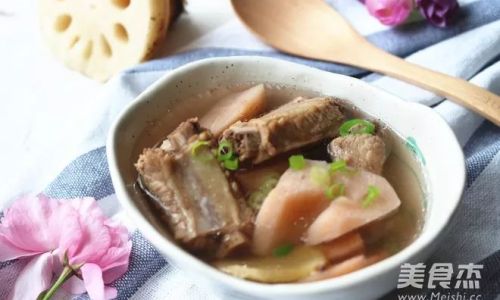
- Place the blanched pork ribs, prepared lotus root slices, and ginger slices into a large soup pot.
- Add enough water or broth to fully submerge the ingredients, with an additional 2-3 inches of liquid for boiling.
-
Simmering
- Bring the pot to a gentle boil over medium-high heat. Once boiling, reduce the heat to low and let the soup simmer. Simmering is crucial for extracting the maximum flavor from the bones and ingredients.
- Cover the pot with a lid, leaving a small gap for steam to escape. This helps to maintain a gentle simmer without boiling over.
-
Cooking Time
- Allow the soup to simmer for at least 1.5 to 2 hours. The longer it simmers, the more flavors will meld together, creating a rich and aromatic broth.
- During the simmering process, check the soup occasionally to ensure it is not boiling too vigorously and to skim off any foam that may form on the surface.
-
Seasoning
After the soup has simmered for the desired time, taste the broth and add salt and white pepper to taste. Start with a small amount of salt and gradually add more until the flavor is balanced. Remember, the soup will continue to reduce and concentrate in flavor as it cools.
-
Final Touches
- If you’ve added optional ingredients like dried mushrooms or red dates, they should be added towards the end of the cooking time, as they don’t require as long to soften and release their flavors.
- Once the soup is seasoned to your liking, turn off the heat and let it sit covered for about 10-15 minutes. This allows the flavors to meld further and the meat to become even more tender.
Serving
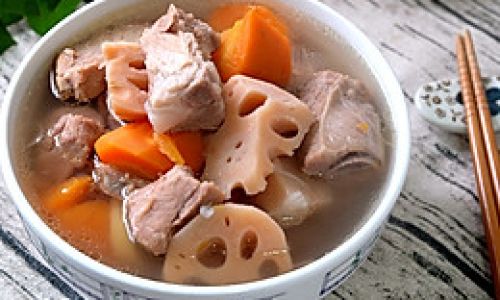
-
Garnishing
- Chop some green onions into fine pieces for garnishing.
- Ladle the hot soup into bowls, ensuring each serving has a good mix of pork ribs, lotus root, and broth.
- Sprinkle the chopped green onions over the top for a fresh, aromatic touch.
-
Accompaniments
- Serve the soup with a side of steamed rice for a complete meal. The rich, savory broth pairs beautifully with the soft, sticky texture of rice.
- You can also offer condiments like soy sauce, chili sauce, or sesame oil on the side for those who prefer a bit more kick.
Conclusion
Lotus Root and Pork Rib Soup is a dish that embodies the essence of comfort food. Its preparation, while requiring patience and attention to detail, is a rewarding process that yields a nourishing and flavorful meal. The harmonious blend of ingredients creates a broth that is both aromatic and soothing, perfect for cold winter nights or anytime you crave a hearty, satisfying dish.
By following the steps outlined in this article, you can create your own version of this classic soup, tailored to your taste preferences. Whether you’re a seasoned chef or a novice in the kitchen, the joy of cooking lies in the experimentation and discovery of new flavors. So, gather your ingredients, roll up your sleeves, and embark on a culinary journey that promises to delight your senses and nourish your body. Enjoy the process and savor every spoonful of your homemade Lotus Root and Pork Rib Soup!





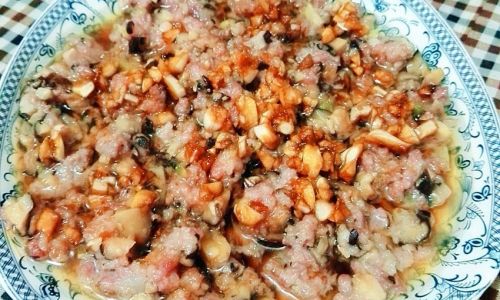
0 comments